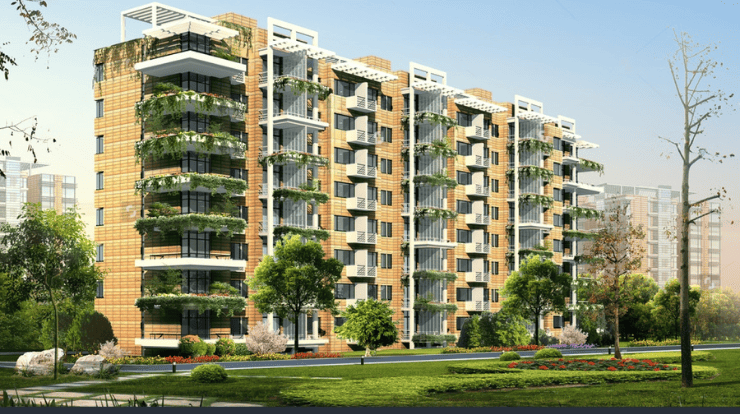As Dubai continues its rapid urban expansion, sustainability has become a core focus in planning and architecture. One critical factor influencing sustainability in dense urban environments is the urban canyon effect. Architectural scale models in Dubai are increasingly used to study this phenomenon.
These models simulate how narrow streets bordered by tall buildings impact airflow, heat retention, and energy performance.
By analyzing urban canyon effects through scale models, architects and planners in Dubai can make data-driven decisions that lead to cooler, more energy-efficient, and pedestrian-friendly developments. This article explores how urban canyon effects are incorporated into architectural scale models for sustainability simulations.
Understanding the Urban Canyon Effect
An urban canyon is a narrow street or corridor flanked by tall buildings on both sides. These spaces resemble natural canyons and have unique environmental dynamics. In cities like Dubai, the urban canyon effect can lead to reduced air movement, heat buildup, and poor thermal comfort at the street level.
Due to the density of construction and vertical growth, Dubai experiences intensified urban heat island effects. The materials used in high-rise facades and paved streets absorb and re-radiate heat. Without proper airflow, this heat lingers between buildings. Studying this at the planning stage is essential for sustainable urban design.
Purpose of Simulating Urban Canyons in Scale Models
Architectural scale models Dubai are designed to replicate the physical dimensions of urban canyons. They help simulate how buildings affect wind flow, solar exposure, and thermal accumulation at a small scale. These simulations support the testing of passive cooling strategies and guide decisions on building height, street width, and spacing.
Urban canyon modeling allows researchers to understand:
- How wind moves between buildings
- Where heat accumulates during the day
- How shading from tall buildings impacts comfort
- Whether natural ventilation is sufficient for nearby structures
- How street-level vegetation interacts with airflow and temperature
Wind Tunnel Testing for Urban Canyon Studies
Wind tunnel testing is one of the main methods used in Dubai to study urban canyon effects. Architectural scale models are placed in a wind tunnel to simulate real wind conditions. The model includes surrounding buildings, open spaces, and street corridors. Sensors measure how air flows through the canyon, identifying zones with stagnant air or excessive turbulence.
This testing provides critical insight into how wind is diverted, trapped, or accelerated in narrow urban corridors. For sustainability, the goal is to encourage cross-ventilation, reduce hotspots, and ensure pedestrian comfort.
Sunlight and Shadow Analysis
Urban canyons significantly influence sunlight exposure. In Dubai, where managing solar gain is vital, scale models help test the impact of shading patterns throughout the day. Physical models are placed under artificial sunlight simulators to track how shadows move across streets and buildings.
This allows planners to determine whether the canyon is over-shaded, reducing daylight in lower levels, or under-shaded, contributing to heat accumulation. The findings help adjust building orientation and height-to-width ratios for improved thermal comfort and energy performance.
Thermal Sensors and Heat Mapping
Some architectural scale models in Dubai are equipped with thermal sensors or coated with heat-sensitive materials. These tools help simulate how surface temperatures change within urban canyons. By exposing the model to artificial heat sources, researchers can measure temperature variations over time.
This kind of thermal mapping highlights heat buildup on pavements, walls, and street surfaces. Based on the results, materials can be selected or adjusted to reduce thermal absorption. Designers may incorporate high-albedo surfaces, reflective coatings, or cooling pavement technologies to mitigate heat retention.
Natural Ventilation and Air Quality Simulations
Urban canyons affect air circulation, which in turn impacts natural ventilation and air quality. In scale models, researchers test whether wind can effectively move pollutants, exhaust, and warm air out of narrow corridors. They may release tracer gases or smoke within the model and monitor how they disperse.
This is important in Dubai where traffic-heavy roads pass through densely developed zones. The model tests help refine the design of ventilation corridors, façade openings, and green barriers to promote cleaner, cooler air in public areas.
Green Infrastructure Integration
Scale models are also used to simulate how greenery can influence urban canyon performance. Features like green walls, trees, and roof gardens are added to the model. These elements are tested to see how they impact shading, cooling, and wind behavior.
For example, trees can slow wind, reduce heat absorption, and create microclimates within urban canyons. Scale model testing helps determine the optimal placement and species selection for such vegetation. This contributes to sustainable landscape planning and aligns with Dubai’s goals for eco-friendly development.
Data Collection and Digital Correlation
Physical scale model testing is often paired with digital simulations. Data from wind, thermal, and solar studies are collected and used to calibrate computer models. This hybrid approach improves accuracy and allows long-term climate behavior predictions.
Architects in Dubai use this combined data to design more efficient buildings and neighborhoods. The results also support compliance with local sustainability frameworks like Estidama and international certifications such as LEED.
Influencing Master Planning and Zoning
Urban canyon testing through architectural models doesn’t just affect individual buildings. It shapes entire urban zones. By understanding how streets, towers, and open spaces interact, planners in Dubai can adjust zoning regulations to ensure proper airflow, daylight access, and temperature control.
This affects decisions on building setbacks, maximum heights, and required spacing. In districts like Downtown Dubai or Business Bay, these considerations have already led to improvements in outdoor thermal comfort and energy performance.
Conclusion
Architectural scale models in Dubai play a vital role in incorporating urban canyon effects into sustainability simulations. These models allow designers and planners to study wind flow, heat buildup, shading, and air quality in realistic conditions.
By testing various configurations and materials at a small scale, they gain insights that help create cooler, more comfortable, and energy-efficient urban environments. As Dubai grows vertically and horizontally, urban canyon simulations will remain an essential tool for sustainable development and climate-responsive design.



